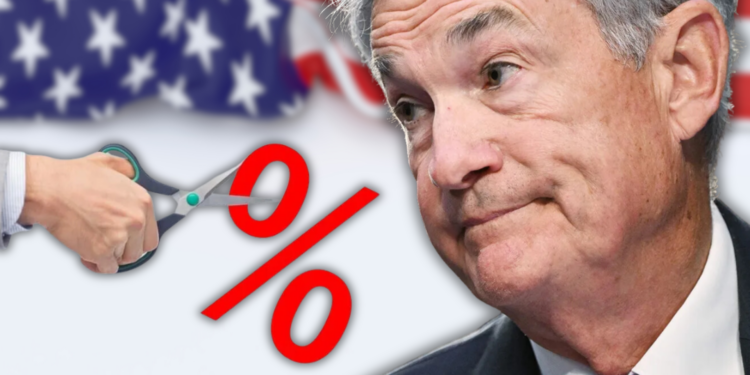- • Market expectations shifted towards favoring a larger 50 basis-point interest rate cut by the Federal Reserve at this week’s meeting, up from previously favoring a smaller 25 basis-point cut.
- • This is the least confident investors have been in the outcome of a Fed meeting since at least 2015, according to Bank of America research.
- • Economists at major U.S. banks are split on whether they expect a 25 or 50 basis-point rate cut by the Fed this week.
The Federal Reserve‘s highly anticipated interest rate decision is arriving this week. All eyes are on the US central bank as it prepares to announce the size of its first rate cut since March 2020. The Fed’s move aims to keep the US economy afloat amid growing recession fears. But the exact cut remains shrouded in uncertainty.
Shifting Market Expectations
Just in the past week, investors’ expectations for a 0.50 percentage point cut have skyrocketed. On Monday, market-implied odds of a 50 basis-point reduction rose to 57%, according to CME Group‘s FedWatch tool. That’s up from just 14% odds last Wednesday.
Meanwhile, the likelihood of a smaller 0.25 percentage point cut has fallen from 50% on Friday to 43% on Monday. It’s the first time since mid-August that traders favor a half-point cut over a quarter-point trim.
Weighing the Fed’s Options
The size of this move represents a “weighty decision,” says Yardeni Research‘s Ed Yardeni. Markets have gyrated lately based on the oscillating outlook for Fed policy. In fact, Bank of America strategists say this is the most uncertainty ahead of a Fed decision since at least 2015.
On one side, some economists think a larger 0.50 percentage point cut is justified given signs of economic weakness. But others argue the Fed should start with a more modest 0.25 point reduction absent an obvious crisis.
The Dilemma: Combating Inflation While Supporting Growth
The Fed faces an unenviable balancing act. Since last July, its key policy rate has sat between 2.25% and 2.50%. But with inflation moderating from its peak, the case for rate cuts has strengthened to keep the economy from slipping into recession.
Yet the Fed must also avoid stimulating too much inflation. Markets expect rates to fall to 4.00-4.25% by the end of 2024 – implying a total of 1.25 percentage points of easing this year.
The Path Ahead
Beyond this week’s decision, attention will turn to the Fed’s forward guidance. Will it signal larger cuts to come? Or a more cautious approach? And can it thread the needle between taming inflation and supporting growth? The Fed’s messaging will shape expectations in the pivotal months ahead.














